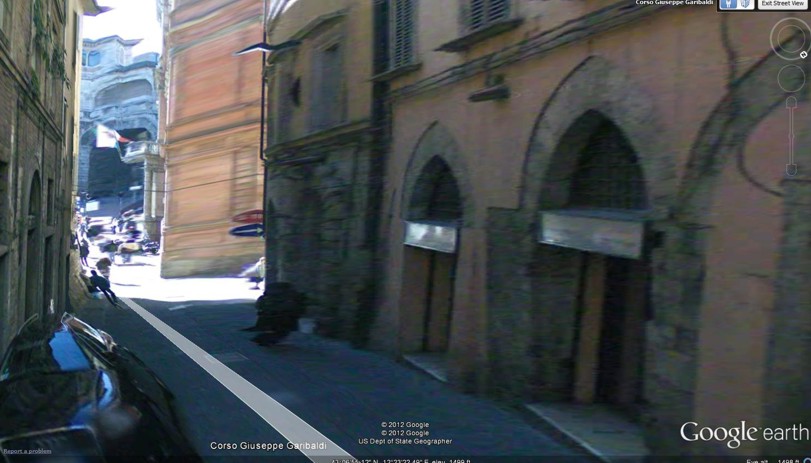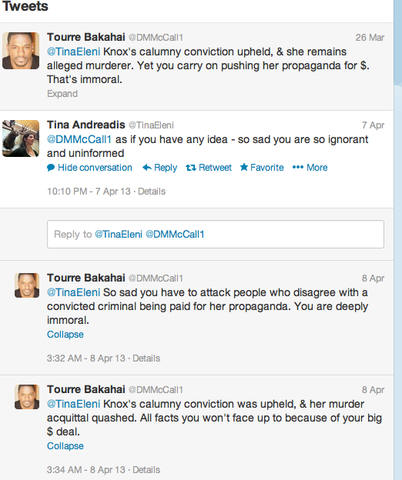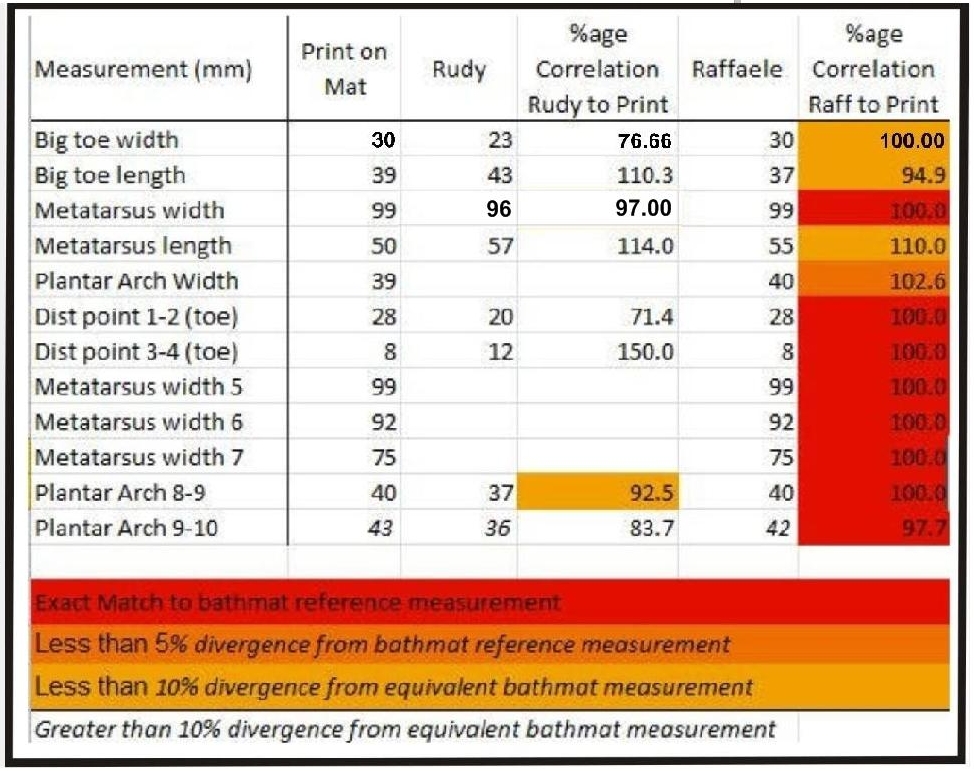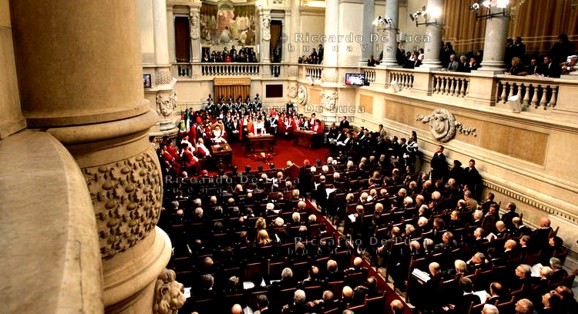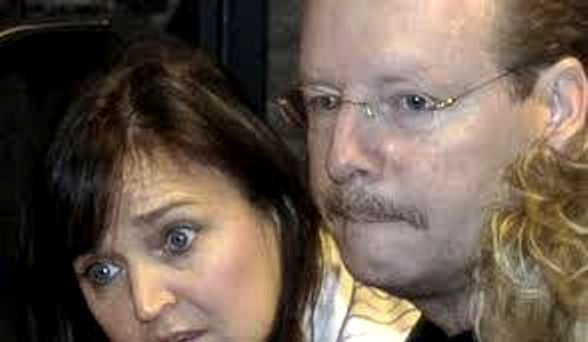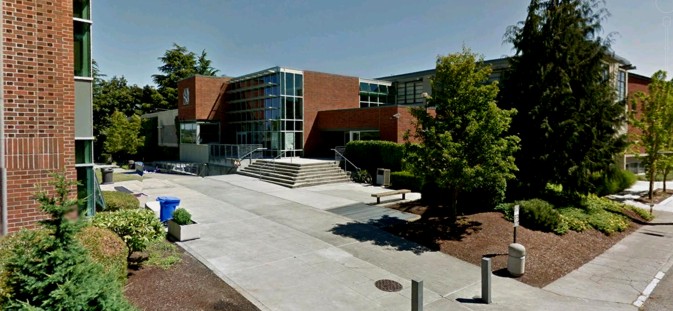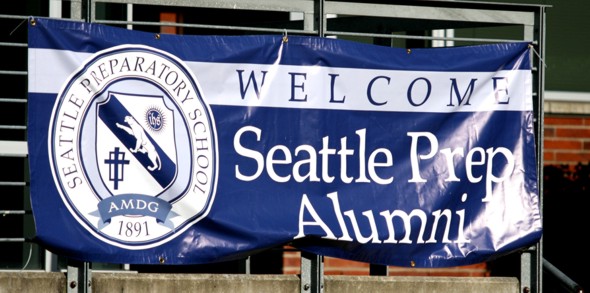
Category: Amanda Knox
Saturday, May 04, 2013
Knox Book - What The Newly Published Writings Reveal To Professional Eyes (1)
Posted by SeekingUnderstanding

Amateurism run amoke is what the unprecedented and unwise Knox extravaganza is starting to look like.
Several TJMK posts below this one have already suggested that the book was rushed into print with very little fact-checking, with no restraint on damaging false accusations, and with no strategic legal considerations.
The same thing seems to have happened with the TV appearances.
Knox had a year and a quarter under wraps to prepare herself and yet her many exaggerated and over-emotional TV claims contradict many things SHE HERSELF has said previously.
She seems to have been rehearsed by handlers with little or no grasp of the extensive fact record.
And where has all this amateurism left her? Open to slow erosion of her credibility by an increasing number of commentators while considerably upping her peril in Italy.
Because many of her claims falsely accuse officers of the court, she could be further indicted for contempt of court, and she could see the five years which was lopped off her sentence by Judge Massei for “mitigating circumstances” reinstated.
Those of us with psychology credentials may not have all been expecting the same thing from Knox when she finally surfaced. But none of us expected to be confronted so forcefully with a classic case of a personality in turmoil.
My first impression after getting through to the end of the book was that it shows such serious disturbance psychologically, so much being revealed in her own words.
It wouldn’t be possible to classify AK as clinically insane, the niceties of this being so precise - but an abnormal mind is clearly illustrated. So clear that it is actually sad - that she has been allowed and encouraged to do this.
The ghost writing, or/and her own expression is also painful to read in terms of quality of writing. These are the main points that have emerged for me, from a psychological perspective, after reading:
AK’s grip on reality (even without drugs) is tragically lacking. It seems that she doesn’t know what a ‘fact’ is. Every fact and event is seen through a lens of her own feeling or emotion - logical connection being absent - together with how she believes it is best to make it appear.
‘Her “best truth” is this over and over again. She doesn’t even understand that this is considered by normal minds to be lying. She doesn’t seem to have a concept of lying.
- “their version of reality was taking over”... Does reality only come in versions?
- “something didn’t feel right. it seemed made up”. Does she not know?
AK continually refers to herself as “different”. She is, but not for the curious or trivial things she believes. She is also obsessively concerned to be seen and classified as a “good person”. This comes up over and over.
“I didnt want them to think I was a bad person”. Note, not: “I didn’t want to BE a bad person” but always “how will people think of me”. This is a continual theme. “I couldn’t believe anyone could think that of me”.
It does show a dissociative and non-integrated personality, with both deep roots and serious implications. There are also indications that she is unable to ‘read’ people’s faces /expressions with any accuracy. (Emotion recognition).
A more sinister and disturbing facet to her personality connected to the above, which comes through in every chapter, is the automatic disparagement of anyone who displeases her (which of course happens frequently - whenever, in fact, someone has a different version to ‘her best truth’).
Someone is then ‘useless’, ‘betraying me’, ‘stupid’, etc etc. These words are all said matter-of-factly…. as if they really are facts. Here are some more of these words, peppered within the text:
- ‘Repellant, self-serving’, ‘hostile’, ‘insincere’, ‘abandoned (me)’, ‘uninterested’, ‘aggressive’, ‘spiteful’, ‘curt’, ‘disdainful’
- ‘Old perv…lecherous’, ‘glared cruelly’, ‘idiotic’, ‘insidious’, ‘controlling’, ‘condescending’, ‘mean’, ‘hateful’, ‘ruthless’....
Note that it is not that AK finds these people to be these things, in her opinion- it is that they ARE these things.
The sub-text is: I am a good person, and they, having displeased or disagreed with me, are ‘bad’. Thus the mechanism for strong, unrestrained projection is at work.
Example: “The police couldn’t bear to admit they were wrong.” Could she, though?
Her projections are so blatant, that I quake for her lack of self-awareness. I used to read literature as a window into self-awareness, insight, philosophical depths, and questions of morality.
Sadly this book is about as far from offering these as one could go. A PR machine missile is not a ‘book’ in the sense I used to know.
AK reveals a very strong inner anger, the control of which is difficult, and which it would seem she is frightened of, and frightened of revealing.
She would also seem to be based in a passive aggressive stance, which gives rise to a side seen as nice and even gentle. These two sides seem badly split.
This would be in keeping with the Envy hypothesis (I refer to Melanie Klein’s ‘Envy and Gratitude’). There are a few definite examples of the consuming anger which Amanda herself describes graphically.
She continually justifies it, also. Sometimes, of course, anger may be justified (‘just anger’) but as described here it is nearer to a rage or a tantrum when things aren’t going according to how she wants them to.
This speaks of manipulation, which would be part of the same profile, and is essentially destructive and spoiling, as well as something that wells up with a will of its own.
She often exposes her state of mind in certain phrases, without realising the implications of what she is saying. This is why I think the whole thing is so sad, as she has been used (seemingly mainly for money) in this foolish venture.
For example: “In that instant I snapped.” when the detective said “you know who killed Meredith.” It wasn’t the pressure/abuse from the police that made her snap, it was being confronted with the truth.
NOT her ‘best truth,’ but one that was simply unbearable to hear. There are many other examples, littered throughout the book, of some of her inner chaos:
- “This is my own fault. I caused the confusion”
- “I wanted to disappear. I didn’t want to be me anymore”.
- “I didn’t know if I was allowed to keep my thoughts private…”
- “Like a roller coaster ride….can’t get off. This is all my own fault” .
- ” I was furious for putting myself in this situation”.
- Rafaelle - “He didn’t look at me. I wondered if he hated me”. (Why should he?)
- “We want justice. But against who? We all want to know, but we all don’t.”
There are many others. Amanda Knox said she loved Italy and I believe her. With adjustment she could have been a lot happier there than she perhaps ever was in Seattle. Now she is in the position of demonizing Italy and its good people there, and in the worst possible way.
Italy was in fact very kind to Amanda Knox, and her treatment there was on the right lines to give her hope of enduring stability. What a pity that dirty PR and legal tricks and money grubbing may have pushed that out of sight forever.
Friday, May 03, 2013
The Amanda Knox Book: Good Reporters Start To Surface Amanda Knox’s False Claims In Droves
Posted by Our Main Posters
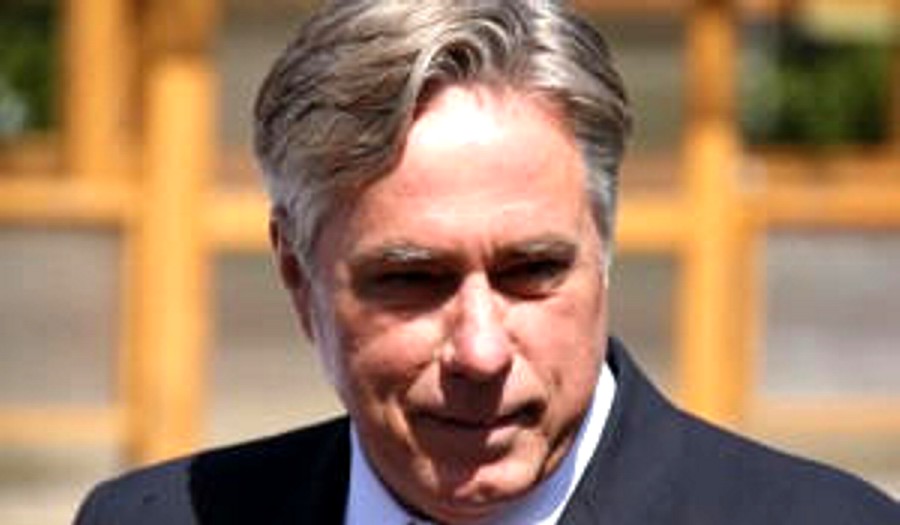
[American Ambassador to Italy David Thorne whose reports contradict Knox’s prison claims]
Did ANYBODY think to check Knox’s book for criminal defamations and false claims? Take this glaring “mistake” from page 248.
During the rebuttals, on December 3, each lawyer was given a half hour to counter the closing arguments made over the past two weeks. Speaking for me, Maria criticized Mignini for portraying Meredith as a saint and me as a devil
Really? Prosecutor Mignini said that? So why did the entire media corps report that it was said by Patrick Lumumba’s lawyer Carlo Pacelli? As the BBC reported:
[Mr Pacelli] added: “Who is the real Amanda Knox? Is it the one we see before us here, simple water and soap, the angelic St Maria Goretti?”
“Or is she really a she-devil, a diabolical person focused on sex, drugs and alcohol, living life to the extreme and borderline - is this the Amanda Knox of 1 November 2007?”
So even Mr Pacelli didnt compare Knox to Meredith, or simply call Knox a she-devil to her face. He asked rhetorically if she was a she-devil or a saint. Not exactly unheard of in American courts.
And remember he was addressing someone who would have been quite happy to see Patrick put away for life, cost him two weeks in a cell, entangled her own mother in a cover-up, destroyed Patrick’s business and reputation world-wide, still hasnt paid him money owed, and for lying about him served three years.
Prosecutor Mignini in fact never called Knox anything at all. We can find no record that he did. Again and again he has denied it. And he had no personal need to prosecute Knox, and certainly no need to frame her, despite many pages Knox devotes to trying to prove the reckless claim that he did.
Another false claim: Knox’s claim that Prosecutor Mignini invented the notion of a satanic cult to explain the Monster of Florence murders, also made by Sollecito, is totally untrue.
Dozens of others had suspected and talked about a satanic cult for YEARS before he investigated one loose end in the case. And both that theory and that investigation are back on track - at the recent order of the Supreme Court.
Another false claim: Knox devotes pages to trying to make herself look good on the witness stand at the trial. But Italians who could follow in Italian in real-time ended up suspecting and despising her performance up there. Read what they saw here and here.
Inspired by such conspicuous false claims as these, various reporters have begun to dig. We posted on Knox’s false claims about her prison time and the many disproofs. Italy-based reporter Andrea Vogt uncovers some more.
Knox’s memoir is a vivid personal account of the difficulties of prison life in Italy, complete with claims about inappropriate behaviour by staff. But Knox herself once painted a different picture.
Other documents - including writings Knox penned in her own hand while incarcerated, case files and state department records - conjure up quite another impression of a very different Knox, one who was more sanguine about her experience.
On the attitudes of the prison staff
“The prison staff are really nice,” wrote Knox in her personal prison diary, which was eventually published in Italy under the title Amanda and the Others.
“They check in to make sure I’m okay very often and are very gentle with me. I don’t like the police as much, though they were nice to me in the end, but only because I had named someone for them, when I was very scared and confused.”
She described Italian prisons as “pretty swell”, with a library, a television in her room, a bathroom and a reading lamp. No-one had beaten her up, she wrote, and one guard gave her a pep talk when she was crying in her cell.
Unlike the heavily-edited memoir, these are phrases she handwrote herself, complete with strike-outs, flowery doodles, peace signs and Beatles lyrics.
On the positive HIV result she was given
Both accounts also refer to the devastating but erroneous news from the prison doctor that she had tested positive for HIV, although her diary presents a more relaxed person at this point. “First of all, the guy told me not to worry, it could be a mistake, they’re going to take a second test next week.”
We also know that it was Knox’s own lawyers who leaked the HIV report and list of sex partners. Not the doctor or anyone else. No malice was intended, that is clear, despite her claims.
On her framing of her kindly employer Lumumba
[Knox] writes that she had a flashback to the interrogation, when she felt coerced into a false accusation. “I was weak and terrified that the police would carry out their threats to put me in prison for 30 years, so I broke down and spoke the words they convinced me to say. I said: ‘Patrick - it was Patrick.’”
In her memoir, she describes in detail the morning that she put that accusation in writing, and says the prison guard told her to write it down fast.
Yet in a letter to her lawyers she gives no hint of being rushed or pressured. “I tried writing what I could remember for the police, because I’ve always been better at thinking when I was writing. They gave me time to do this. In this message I wrote about my doubts, my questions and what I knew to be true.”
On her medical examination after arrest
“After my arrest, I was taken downstairs to a room where, in front of a male doctor, female nurse, and a few female police officers, I was told to strip naked and spread my legs. I was embarrassed because of my nudity, my period - I felt frustrated and helpless.”
The doctor inspected, measured and photographed her private parts, she writes - “the most dehumanising, degrading experience I had ever been through”.
But in the 9 November letter to her lawyers, she described a far more routine experience.
“During this time I was checked out by medics. I had my picture taken as well as more copies of my fingerprints. They took my shoes and my phone. I wanted to go home but they told me to wait. And that eventually I was to be arrested. Then I was taken here, to the prison, in the last car of three that carried Patrick, then Raffaele, then me to prison.”
On her persona and mood swings in prison
She says she was often suicidal, but recollections of prison staff and other inmates differ. Flores Innocenzia de Jesus, a woman incarcerated with Amanda in 2010 described Knox as sunny and popular among the children who were in Capanne with their mothers, and recalled her avid participation in music and theatrical events. She also held a sought-after job taking orders and delivering goods to inmates from the prison dispensary.
“Most of the time when we spoke during our exercise break, the kids would call her and she would go and play with them,” de Jesus told me.
And on what US officlals and her own lawyers perceived
State department cables, released through the Freedom of Information Act, show that between 2007 and 2009, three different high-level diplomats from Rome (Ambassador Ronald Spogli, Deputy Chief Elizabeth Dibble and Ambassador David Thorne) were among those reviewing Knox’s case.
Embassy officials visited regularly. Records show one consular official visited Knox on 12 November, soon after her arrest. A few weeks later she wrote in her diary how the visits of embassy officials improved her experience….
In 2008 and 2009, she was visited by two embassy officials at a time, six times. Ambassador David Thorne, whose name appears at the bottom of cables in August, November and December of 2009, is the brother- in-law of US Secretary of State John Kerry (at that time chairman of the Senate Foreign Relations Committee).
If the diplomats knew anything of the “harrowing prison hell” Knox was going through (as one paper put it), they are keeping those reports under wraps. Neither Kerry nor any other prominent US politician has made any public complaints. Even today, her Italian lawyers maintain she was not mistreated.
Half a dozen obvious false claims and defamations here. We estimate we will uncover well over one hundred more.
Thursday, April 11, 2013
Knox Book Put On Hold In UK As Legal Implications Of Blood Money For Still-Accused Finally Sink In
Posted by Our Main Posters
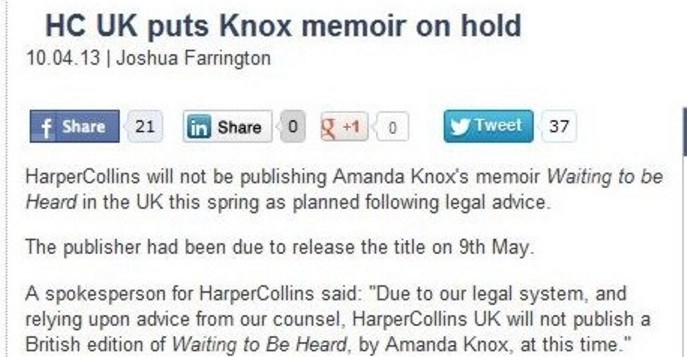
There have always been several huge problems in the promotion of Amanda Knox.
One problem is that Knox is not the real victim in the case and a great deal of compassion still resides for Meredith. Earning windfall blood money from the cruel death of a claimed close friend is hardly a classy way to go.
A second problem is that we are still only at the end of the second act of a three act play in terms of the trials and appeals, and the Italian Supreme Court in the third act to come will almost certainly be no gullible pushover. And a whining or inaccurate book or movie demonising Italy and Italians (as her complaints about Capanne already have done) might not help her legal prospects one little bit.
A third problem is that Italy’s officialdom and its population tend to maintain a hard and unblinking belief in the evidence against Sollecito and Knox, especially as the million dollar PR campaign largely flew below the radar there and they saw much of the hard case and a callous Knox live on TV. For example in Florence and Milan....
*******
Guess when we first posted those paragraphs above? Actually we posted them fifteen months ago on 6 January 2012.
And finally today fifteen months later HarperCollins UK suspended their publication of Knox’s book. Can the HarperCollins US suspension of the book be far behind?
We are not particularly given to directing legal advice to Amanda Knox - we think she should rethink and answer all the open questions - but the leeching of Knox-Mellas blood money going back nearly five years is absolute anathema to Meredith’s family.
So we have posted five subsequent times, pointing out to the Knox-Melasses and Robert Barnett and Ted Simon what should have been very, very obvious to them when they did their due diligence in Italy on the book:
Publishing to impugn Italian justice officials while still accused in an ongoing legal process is a contempt of court felony in Italy.
Ask Raffael Sollecito. He is now under investigation by the Florence chief prosecutor and could face millions in damages and further years in prison. So could his publishers Simon & Schuster and his shadow-writer Andrew Gumbel.
Not to mention that Sollecito is probably wrecking any chances he had at the repeat of the appeal. Does Amanda Knox REALLY want to be in the same boat? And do her shadow-writer and her publishers too?
Here are our other previous posts on her book:
- Were Prospective Knox Publishers Given The Full Score On The Likely Legal Future Of This Case?
- HarperCollins: A Commendably Balanced Report By The UK Daily Telegraph’s Iain Hollingshead
- HarperCollins: Perhaps This Explains Why Jonathan Burnham Was Inspired To Take Such A Seeming Risk
- My Letter To Claire Wachtell of HarperCollins Protesting How Distasteful Knox’s Book Promises To Be
Below: The HarperCollins US publicist Tina Andreadis (aka Tina Eleni) participated in the very very very odd Twitter exchange at bottom. She seems unfamiliar with the concept of “contempt of court” and the criminal and civil nightmares headed Simon & Schuster’s and Sollcito’s way.
Perhaps Tina Andreadis was out of the loop when her publishing company did its due diligence.
Thanks to our main poster Bedelia for this astonishing catch.
Monday, April 08, 2013
Experienced Trial Lawyer: There’s Far More Evidence Than UK/US Courts Need For Guilt
Posted by SomeAlibi
The false claim “there is no evidence”
Some amateur supporters of Knox and Sollecito have committed thousands of hours online to try and blur and obfuscate the facts of the case in front of the general public.
Their goal is simple: to create an overwhelming meme that there is “no evidence” against the accused, and thereby try to create a groundswell of support. Curt Knox and Edda Mellas and Ted Simon have all made this “no evidence” claim many times.
At least some some of the media have eagerly swallowed it.
The amateur PR flunkies make up myriad alternate versions of what created single points of evidence, often xenophobic scare stories designed to trigger emotional reactions, which they hope will be repeated often enough to become accepted as “the truth”.
And where things get really tricky, another time honored tactic is to go on at great length about irrelevant details, essentially to filibuster, in the hope that general observers will lose patience with trying to work it all out.
But time and again we have shown there is actually a great deal of evidence.
Evidence is the raw stuff of criminal cases. Let me speak here as a lawyer. Do you know how many evidence points are required to prove Guilt? One evidence point if it is definitive.
A definitive evidence point
If you’re new to this case or undecided, what is an easy example of ONE definitive evidence item that might stand alone? Might quickly, simply, and overwhelmingly convince you to invest more time into understanding the real evidence, not that distorted by the PR campaign?
In fact we have quite a choice. See the footprint which was second on that list.
Now see the table above. I recommend the use of this table of measurement to avoid the lengthy back and forward of narrative argument which so lends itself to obscuring the truth. I would like to present you with this single table of measurements to give you pause to question whether this line that there is “no evidence” is really true or whether it might be a crafted deception.
I present here a summarized view of critical evidence which suggests with devastating clarity that Raffaele Sollecito was present the night of the murder of Meredith Kercher. No lengthy text, no alternate versions, just measurements.
This FIRMLY places Sollecito in the very room where Meredith was attacked and killed.
In the small bathroom right next to Meredith’s bedroom was a bathmat. On it was found a bloody naked right footprint of someone walking straight towards the shower in the bathroom. The blood is that of Meredith.
The footprint is not Amanda Knox’s - it is too big - but we can compare it to the prints taken of Rudy Guede and Raffaele Sollecito.
In Judge Massei’s report the multiple measurements were detailed in the narrative over many sentences and, in that form, their immediate cumulative impact is less obvious. It is only by tabulating them, that we are forcefully hit by not one but two clear impressions:
The measurements are extremely highly correlated to the right foot of Raffaele Sollecito in twelve separate individual measurements. In themselves they would be enough for a verdict of guilt in all but a few court cases.
But they also show a manifest LACK of correlation to the right foot of Rudy Guede, the only other male in that cottage on the night. Have a look for yourself.
If you were the prosecution, or indeed the jury, and you saw these measurements of Raffaele’s foot versus the print, what would you think? Answer the question for yourself based on the evidence admitted to court.
Then, if you compare further, exactly how plausible do you find it that the measurements of the bloody imprint are Rudy Guede’s instead?
Not only are some of the individual measurements of Rudy’s imprint as much as 30% too small, but the relative proportions of length and breadth measurements are entirely wrong as well, both undershooting and overshooting by a large margin (70% to 150%).
Conclusions that must follow
Presented with those numbers, would you consider those measurements of Rudy Guede’s right foot to show any credible correlation to those of the footprint on the mat?
Supporters of the two have tried frantically to create smoke screen around this - the wrong technique was used they say (ruled not so by the court) / they are the wrong measurements (all 32 of them? that Raffaele’s are matching exactly or within a millimetre but Rudy’s are out by as much as -30% to +50%...?).
The severity of the impact on the defence is such that there was even a distorted photoshopped version circulated by online supporters of Raffaele and Amanda until they were caught out early on in coverage. But it is hopeless, because these are pure measurement taken against a scale that was presented in court and the data sits before you.
Have a look at the measurements and understand this was evidence presented in court. Whose foot do you think was in that bathroom that night? Rudy Guede? Or was it Raffaele Sollecito on twelve counts of measurement?
And if you find for the latter, you must consider very seriously what that tells you both about the idea there is “no evidence” in this case and who was in the cottage that night…
Wednesday, April 03, 2013
The Real Catastrophe For The Defenses That Was The Chieffi Supreme Court Ruling
Posted by Machiavelli
1. Overview
On Tuesday March 26, nine judges of the Rome Supreme Court of Cassation led by the respected Dr Chieffi quashed the previous acquittals of Amanda Knox and Raffaele Sollecito for the murder of Meredith Kercher.
The Supreme Court annulled almost the entirety of the 2011 Hellmann-Zanetti appeal verdicts, declaring the appeal outcome completely invalid on five of the six charges. The Court only upheld the sixth charge which made definitive Knox’s conviction for calunnia for which she had been sentenced to three years.
Calunnia is the crime of maliciously placing false evidence or testimony against an innocent person, something the Italian Criminal Code considers not as criminal defamation but as a form of obstruction of justice, a more serious offence.
Worse for Knox, the Court annulled a part of the appeal verdict which had dropped the aggravation known as continuance, the aggravation that acknowledges a logical link between the obstruction of justice and the murder charge.
2. First reactions
Once the dust has settled, the defendants and pro-Knox and pro-Sollecito supporters and defences may finally realize how severe a defeat has been dealt to their side.
Most American journalists were completely unprepared for and very surprised at the outcome. But most Italian commenters and a very few others elsewhere considered the outcome quite predictable (the criminologist Roberta Bruzzone for example hinted so in written articles, so did Judge Simonetta Matone, as well as John Kercher in his book, and many others too).
This really is a catastrophe for the defences. A complete annulment of an acquittal verdict is just not frequent at all. They do occasionally occur, though, and this one appeared easily predictable because of the extremely low quality of the appeal verdict report.
For myself I could hardly imagine a survival of the Pratillo Hellmann-Zanetti outcome as being realistic.
I previously posted at length on the Galati-Costagliola recourse (that is an important read if you want to understand all angles of the annulment). I argued there that a Supreme Court acceptance of the verdict would have so jeopardized the Italian jurisprudence precedents on circumstantial evidence that it would have become impossible to convict anyone in Italy at all.
The previous appeal trial obviously violated the Judicial Code as it was based on illegitimate moves such the appointing of new DNA experts for unacceptable reasons. It contained patent violations of jurisprudence such as the unjustified dismissal of Rudy Guede’s verdict on a subset of the circumstantial evidence. Hellmann-Zanetti even “interpreted” the Constitution instead of quoting Constitutional Court jurisprudence.
They omitted a number of pieces of evidence, literally “forgetting” them or dismissing them without providing an argument (they should have, being an appellate trial based on the previous findings and arguments of the lower court). The appeal trial had obvious illogical contradictions on a macro level, such as the contradictory putting together of the conviction for calunnia and the acquittal on the murder charge (ignoring a logical link required by statute without introducing any reason at all).
The Hellmann-Zanetti verdict was also based on an illogical processing of all pieces of evidence (such as the dismissal of Nara Capezzali’s evidence without logical reason, even after calling her “credible,” and that of Quintavalle; and attributing the bloody footprint to Rudy Guede on the basis of some ludicrous reasoning).
The appeal verdict basically ignored the concept of “a contrario” evidence, like concluding that the luminol footprints are probably not in blood but in some other substance and not related to the murder (despite failure to indicate any alternative substance nor any reasonable scenario).
The verdict was also biased with open prejudice in favor of two of the suspects in assuming they would be unlikely to even socialize or hang out together with the third, based on social or racial discrimination (two whites from good-looking families are called “good fellows” while the third is “different”).
Beyond the glaring, major faux pas in procedure, the verdict’s low quality, unlawfulnesses, and hypocrisy in its reasoning tended to be pervasive and obvious through all its paragraphs, and possibly this also could have caused an aura of distrust toward the work of the Hellmann-Zanetti court.
One could assess the strikingly low quality of the appeal verdict especially by comparing it to a sophisticated recourse such as the 100-page Galati-Costagliola Supreme Court appeal. While nobody could anticipate with total certainty the Supreme Court decision between the Galati-Costagliola appeal and the Pratillo Hellmann-Zanetti appeal verdict, to good legal eyes the outcome would be as uncertain as the result of an England versus San Marino football game!
EACH of the eleven single mistakes, plus EACH of the six “method” mistakes pointed out in the Galati-Costagliola recourse could by itself have been a sufficient cause for the annulment of the acquittals.
The redundancy of reasons and remarks by Cassation sheds light on the judgment shortcomings from many different angles, and all the reasons presented for the recourse were certainly assessed by the Supreme Court.
But on the practical side, most probably the Hellmann-Zanetti verdict did not even survive beyond the first mistake. The appeal verdict most likely crumbled completely from the very beginning on reason #1, the illegitimate appointing of new experts by Hellmann-Zanetti to re-examine the DNA.
But even given that the defences’ defeat could be foreseen, I never expected the defeat to pervade to this extent.
I thought the appeal verdict might be quashed entirely and a new appeal would start from scratch. But the Supreme Court went further and decided to “save” only the parts of the verdict that were unfavorable to Knox, and declared her conviction for calunnia definitive.
Meanwhile, the Court accepted the Calati-Costagliola reason #10, and quashed the part that denied a logical link between calunnia and murder.
The Supreme Court thus sends Raffaele Solecito and Amanda Knox back to appeal trial, but this time Amanda Knox will enter the trial as a felony convict with a definitive criminal record, which ““ the Supreme Court hints ““ is to be considered logically linked with the charge of murder.
Moreover, judges in the appeal that will come next in Florence will have to follow the decisions set by the Supreme Court. Since the Supreme Court’s motivations report has not been issued yet, we still don’t know what points exactly Cassazione will make. But we can expect that several arguments used by Pratillo Hellmann-Zanetti that were “needed” to acquit Knox and Sollecito will be now declared illegitimate.
This might mean that we will not see for a second time such faulty reasoning as “Knox’s statement can’t be used as evidence of lying because it is not true.” It may not be possible to dismiss the verdict that found Guede guilty of concurring in murder “with others” from the set of evidence just because it was “weak.” It may not be possible to deduce the time of death based only on declarations of Rudy Guede.
We also may not have a chance to again see an expert declaring that contamination is “likely” on the sole basis that “everything is possible.” We also may not have another judge attributing footprints without talking about any measurements.

The Supreme Court session began on March 25, and it is only a rare event that a Cassazione session extends over into two days.
The first criminal division of the Supreme Court ““ scheduled to decide on this case ““ was a five-judge panel presided over by Dr Severo Chieffi. His name never did sound like a particularly favorable omen for Knox and Sollecito. Dr Chieffi is a 70-year-old judge, known for being the author of a famous 2008 verdict which definitively closed a notorious criminal case (“the first time a Cassazione hearing attracted massive live media attention”), a verdict among the most quoted in jurisprudence which is known as that “on reasonable doubt.”
Dr Chieffi and his nine-judge panel explained reasonable doubt as to be intended as an “a contrario” concept, the concept used to formulate a logical reasonable alternative. That verdict pointed out the concept of “reasonable” and also stressed that the nature of evidence is “logical”. “Reasonable” depends only on the plausibility of alternatives, not on how conclusive or reliable single pieces of circumstantial evidence are, and a piece of evidence does not require any specific “physical” element or conclusive quality.
The rapporteur judge was Dr Piera Maria Severina Caprioglio. The rapporteur judge goes through the papers of the whole trial and summarizes their content to the other panel judges; the rapporteur and the president are the two who physically write the report (it may sound like irony that both judges have the adjective “severe” in their name). I was told Dr Caprioglio was a rather stiff judge, known for her scrupulosity in procedure matters, and she is also a specialist “and hard liner“ about sexual crime (maybe that’s why she was chosen by Dr Chieffi as the one to do the research on this case).
At the Supreme Court there is also an office known as the Office of Procurator General, which has more than 50 magistrates. The Procurator General appoints a magistrate (normally called the “PG”) to study cases and to make arguments on all cases dealt with in Supreme Court sessions. The PG is considered “neutral” in the sense that their office represents no party only the “precedents” of the court. While the rapporteur makes a description of the case, the procurator makes arguments about the recourses submitted by the parties.
At 10:30 am on Monday, Judge Caprioglio begun her 90-minute speech summarizing the case. She detailed legal events that led to the first Massei-Cristiani verdict, and then the appeal trial led by Hellmann-Zanetti and their verdict.
She sounded rather neutral; hers was a sheer summary with no comment attached. Nevertheless, it sounded most ominous for the defences: right from Dr Caprioglio’s speech, in fact, Knox and Sollecito’s attorneys understood that they were going to lose.
This is because Dr Caprioglio devoted half of her rapporteur time or more to detailing Massei’s first degree trial and verdict, explaining the arguments and evidence used by the Massei court. Such attention was itself ominous to the defences.
A main basis of the Pratillo Hellmann-Zanetti verdict is in fact a series of denials about the work of the lower court, in which plenty of evidence was simply ignored or dismissed without dealing with the first degree conclusions; while the strategy of Giulia Bongiorno was to entirely “replace” the details of the evidence set with a self-made narrative, quite unattached to actual trial events, which somewhat “worked” as rhetoric and in the media.
Yet Dr Caprioglio was not yet the biggest problem facing Knox and Sollecito. The defence was about to face a pincer front, because the Procurator General’s offices did not appreciate the appeal verdict at all.
A bomb went off with the speech of Procurator Riello which followed next.
Dr Riello recalled the points of recourse submitted by Galati-Costagliola, which may sound technical or subtle to those unaccustomed to them. Dr Riello endorsed the radical censures made by Galati-Costagliola and made clear his own view in an overview of the whole verdict. His arguments had the subtlety of an anvil.
To summarize, he basically maintained the appeal judges had conducted an appeal trial as if they were idiots, and followed the paths of logic, procedure and law like sailors without a compass.
Seen from the point of view of the Procurator General, their way of conducting the appeal trial itself was like a journey through a dreadful series of unlawful steps, decisions informally taken without deliberation, and arbitrary and unjustified ordinances. The court simply “lost their way.”
In the body of their findings, it seems they understood almost nothing about the evidence ““ in particular about how circumstantial evidence works. They did not deal with the findings and arguments of the first instance court as they should have, as if they didn’t exist, and they trivialized the previous legal material.
In fact Dr Riello sounded almost sarcastic; outraged by the incredibly amateurish work of this appeal court, he tended to detail the merit of questions and was interrupted by the president asking him to stick to the discussion on the table.
At the close of his speech, he called the appeal verdict “a rare concentration of law violation, a monument to illogicality.” He said “the judge of merit lost their way in this trial.” Dr Riello noted “they fragmented, they parceled out the pieces of circumstantial evidence.”
He implied not only incompetence but a kind of disingenuous attitude: “The Court employed a fair dose of snobbism for trivializing the first degree verdict, reducing it to four elements. A very imprecise and superficial synthesis.”
He went beyond the criticism expressed in the Galati-Costagliola appeal when he described an obvious bias of the appeal court “not in just a few passages of the second instance verdict ““ it’s as if the defendants should benefit from a kind of anthropological and cultural immunity, in relation to the events.”
He criticized Pratillo Hellmann’s dismissal of Amanda Knox’s handwritten memoir, and recommended that a new appeal trial must in part be based on that statement as “it is a usable document”; and he stressed that in his opinion “the scream heard by Amanda is a significant datum, of great importance.” The behavior claimed by Knox on the morning of November 2, 2007 in his view was “chilling” and her taking a shower in a cold bathroom is a “chilling detail.”
Dr Riello concludes by saying: “These are all conditions for not letting the curtains close on an upsetting and extremely serious crime for which the only culprit found up to the present day is Rudy Hermann Guede, who has been addressed through a Lombroso-style assessment, either calling him a thief, a criminal or a drifter. He didn’t confess and he was not convicted by another court for concurring in a crime together with others, maybe with ‘ectoplasms.’” (A reference to Cassation’s previous decision that he did commit the crime with others, but Hellmann-Zanetti identified no other people; hence ‘ectoplasms.’)
The Prosecutor General also dealt with the DNA experts’ report which defined the previous results as “unreliable.” He implied that the report and its language were used as a pretext by the defences “as a tombstone, while in fact it is not.” It was used as a tool to focus the trial on the DNA and steer it away from the whole evidence set, to “bury the set of pieces of circumstantial evidence which all have their vital value.”
The rhetoric of the defences aimed to “blame everything on those involved in the scientific police who are almost depicted as bunglers; however they are not brigadiers playing with toy chemical sets, they are in fact a highly qualified department and they do employ cutting-edge technologies.”
A severe legal bashing like the Riello speech is not at all common at the Cassazione. As I heard the news on the radio, law experts commented that the event was unusually serious, and they hinted that its consequences may lead to the setting of a historic jurisprudence precedent.
Francesco Maresca ““ who brought his mentor Vieri Fabiani with him ““ endorsed the recourse points and made points similar to Dr Riello’s. He pointed out that a major flaw of the appeal trial was to focus on two DNA instances as if the case was based on them. The court appointed experts to review items with no legitimate basis, they provided an inconsistent explanation for their steps, and then they refused to analyze and introduce further evidence, totally contradicting themselves and also violating the code.
Their criteria for choosing which piece of evidence to discuss or review were totally contradictory, and their series of steps egregiously violated a series of procedural conditions that any court is supposed to follow.
The analyzing of the knife DNA sample and bra clasp sample as pieces in isolation is a sort of device that serves a defence made-up narrative; the focus on “disputed” items and the re-make of a narrative about legal events is simply a defence strategy which is aimed at the media rather than official court proceedings. For the Kercher family, the evidence points to the guilt of Knox and Sollecito beyond reasonable doubt.
The evidence, explained Maresca, consisted of numerous pieces of evidence and reasoning, that were simply not dealt with by the appeal court. The whole process was “non-transparent” and the result is also contradictory given that Knox is indicted by her own words on the crime of calunnia.
Maresca explained that the appeal verdict is riddled with many flaws and errors in the merit of the facts which cannot be assessed by the Cassazione court, but there are also patent violations of law which are “strong and obvious” and of the most serious kind.

Then it was the defence attorneys’ turn. Giulia Bongiorno knew she would need to apply the full power of her best rhetorical skills: she pointed out a factual error in the recalling of Prosecutor Riello and threw herself head-first into the merit of the evidence.
She even made FOA-style overstatements on the number of Guede’s DNA instances: “So many genetic traces of Rudy Guede were found in the bedroom of the murder, Amanda and Raffaele’s DNA would have been found too if they had been there.” (Her claim is false: in fact, only four samples yielding Guede’s DNA were found in the bedroom, and some were very scant.)
Bongiorno focused on investigation mistakes and complained that Raffaele Sollecito “was put in jail because of a shoe print found beyond the duvet which covered the body, a print that was attributed to Guede.” She also commented on Knox’s handwritten memoir and again put forward the claim ““ already rejected by all the judges of all instances ““ that the statement should be “not usable” because there was a “blackout” of defendant guarantees. Apparently, Bongiorno did understand that the most dangerous threat, and the actual battleground, would be about the danger of having Knox now definitively convicted for calunnia.
Bongiorno said “we do not want to put the scientific police on trial” but then said the point defence demonstrated was that they made “an infinite series of errors.” In fact, Bongiorno’s speech largely consisted of the well-known defense stance of pointing the finger at a list of supposed wrong-doings by the police.
Bongiorno’s argument of pointing out supposed “police mistakes” would probably ring true to Knox’s Amarican supporters, who may find these arguments convincing and effective.
In fact, it was obvious that Bongiorno’s position was extremely weak, and that her arguments were not going to have any effect. The weakness of Bongiorno’s arguments was obvious from the start because she backed into arguing the case only on the merit of investigation techniques.
Her arguments would maybe resonate effectively with uninformed spectators, but they had already failed in those courts that were legitimate, and they have no consequence from a legal standpoint. Talking about supposed mistakes during the investigation and supposed bad behavior of police are good to build a narrative for journalists, but they would have zero effect on expert judges.
I think she knew she was going to lose, but besides being a lawyer, Giulia Bongiorno is also a smart public person, and she plays in the public arena as well as in a court of law at the same time. Her technical stances are all wrong, but she knows she will be remembered well for her good-looking performance.
The president did not interrupt her, showing due politeness toward the defence attorneys. But no attorney would convince the Supreme Court by simply saying “we demonstrated that the investigators made mistakes.”
In order to seek to obtain some positive effect, she should have argued in favor of the Pratillo Hellmann-Zanetti appeal verdict on points of law, and put forward arguments for their legitimacy; for example, an argument in response to point #1 of Galati’s recourse claiming that the appointing of DNA experts was unmotivated.
Luciano Ghirga and Carlo Dalla Vedova had to take care of their own recourse against the conviction for calunnia on the false accusation of Patrick Lumumba. Their line of defence on this point was the same ““ and could be nothing else ““ than what they maintained though all the previous instances. Dalla Vedova deals with the handwritten note where he understands “Amanda says she is confused, she does not care about what she said.”
They reintroduced the myth that “she had been interrogated by the investigators for 54 hours.” They explain ““ almost a paradoxical argument ““ that the document was “a defensive paper” while then becoming one of the elements on which the charge of calunnia was built. They stressed that “she wanted to cooperate” with the investigation and that “she was a friend of Meredith.”
A failure of their arguments was easily predictable because their recourse was built on points that had already failed at lower instances. Some time ago before this appeal, I posted this criticism of the Ghirga-Dalla Vedova recourse on Knox’s calunnia conviction to the Supreme Court:
Pages 3-11: The first argument is about the non-usability of the evidence for the crime of calunnia.
Such an argument is basically the re-proposal of the same argument that had been already dismissed by the Supreme Court in 2008, and subsequently by Massei-Cristiani in 2009 and also by Pratillo Hellmann-Zanetti. Therefore, it is an especially weak argument. Ghirga-Dalla Vedova do attempt to use it again at the Supreme Court because it is what they have.
Just like Giulia Bongiorno will likely recall it too, just like she attempted to request of nullification of Stefanoni’s testimony on procedure grounds before Massei, which was rejected again by Hellmann-Zanetti (the Knox supporters have such a spun perception of the proceedings, they apparently don’t see how some basic defensive claims were rejected by all judges).
Pages 11-14 complete the first argument, addressing the further requirements of the crime of calunnia (maliciousness and voluntarity).
Basically, this point contends that the false accusation was not voluntary or not malicious. The only usable point in my opinion in this reasoning consists of one line, which recalls that Hellmann-Zanetti did not acknowledge the aggravation of continuance for the crime of calunnia. But this point has no consequence because it is a weak point in Hellmann’s verdict itself which violates jurisprudence and logic itself.
The other claims at this point are basically useless; they attack the Hellmann verdict in a way peculiar to the prosecution appeal with an opposite stance. But in fact “not knowing” that someone is factually innocent obviously cannot be extended to an absolute meaning; Hellmann is illogical on that, because he dismisses the logical link with the murder without explanation.
Pages 14-18 speak about the alleged “extreme exhaustion” of Knox in order to exculpate her of her confusion and falsehood.
This argument tends to be a stronger attempt to use some of the contradiction in Pratillo Hellmann-Zanetti, using as a starting point the fact that H-Z did state that Knox was allegedly under excessive pressure. They convicted her for calunnia nonetheless. I think this argument won’t go too far, for two reasons.
First, because it’s basically on the merits; it quotes the whole writing of Knox and requests the SC to directly re-assess the sincerity of her words, something which the SC are unlikely to do.
Second, because while on the one hand there is a contradiction in H-Z as they accuse her of calunnia but do not use her writings as an evidence of lying on the other crime, and they reject the continuance despite the obvious link between the calunnia and the murder, on the other hand the contradiction addressed by Ghirga is weaker. There was in fact no factual finding about “excessive pressure,” neither in the H-Z appeal trial nor in previous Massei testimonies.
As for jurisprudence, pressure and “psychological alteration” itself is not enough to cause a loss of mental faculties to understand and will. Basically, most crimes are committed in a state of psychological stress or alteration, and people are responsible for themselves notwithstanding. The faculty to understand and will is not a psychological condition; it is something that affects the cognitive and decisional functioning of the brain on more basic functions, and requires a medical assessment.
So there is no way the argument of Ghirga-Dalla Vedova can overturn a conviction for calunnia based on an argument of psychological conditions: they have no basis; and there is no consistent ground to assert “excessive pressure” either.
Pages 19-20 is a very short argument about two articles of the code that Ghirga puts in in relation to a case of defensive rights.
This is an argument I am unable to assess clearly. This point basically claims Knox is somehow protected by the law because of an extension of her rights of defence. I have the feeling this point is wrong, because the boundaries of the right to defend oneself are already fixed and limited by a SC ruling of 2008, and because Article 51 only applies to what she declared as a defendant, but not to what she declared as a witness.
Pages 20-22 is only about the sentencing and not about innocence; it claims that, anyway, even if Amanda is guilty of calunnia, the punishment was too stiff and this severity was not logically motivated by Hellmann. This point is the only that could stand, in my opinion.
After the hearing of March 25 ““ which was the ninth case the Supreme Court panel dealt with that day ““ the panel deliberated for six hours, then adjourned the hearing and scheduled the final decision for the following morning.
The question whether to annul the verdict entirely, or to confirm the calunnia conviction, might have been the cause of some of the extra time needed.
When the Supreme Court has to deal with scheduled cases the relator puts a mark ““ between 1 and 8 ““ indicating the difficulty of the case: 1 is the easiest and 8 is very complex.
Almost all recourses are below 3, while a case like the one on the Narducci investigation a week earlier, involving Mignini, could have been closer to 8. The difficulty of this case is unknown. But because of some sensitive jurisprudence involved and because of the articulation of the recourses, this could have been around 6 or higher.
After retirement of the court, and adjournment to the subsequent day, at 10 am on March 26, the court’s dispositivo was the following:
ENDING THE RESERVATION FROM THE HEARING OF 03-25-2013, [THE COURT] DECIDES AS FOLLOWS: ANNULS THE IMPUGNED VERDICT, LIMITED TO THE CRIMES UNDER CHARGES: A) (INTO WHICH CHARGE C) IS ABSORBED), B), D), E), AND TO THE AGGRAVATING CIRCUMSTANCE UNDER C.P. ART. 61 NO.2 IN RELATION TO CHARGE F), AND REMANDS [THE CASE] TO THE CORTE DI ASSISE DI APPELLO OF FLORENCE FOR A NEW TRIAL. REJECTS THE APPEAL OF AMANDA MARIE KNOX, WHOM IT SENTENCES TO THE PAYMENT OF COURT COSTS AS WELL AS REIMBURSEMENT OF EXPENSES INCURRED IN THE PRESENT PROCEEDINGS BY CIVIL PARTY DIYA LUMUMBA, IN THE AMOUNT OF 4000 (FOUR THOUSAND) EUROS, IN ADDITION TO I.V.A. AND C.P.A., PLUS GENERAL EXPENSES ACCORDING TO LAW.
Thus, Amanda Knox and Raffaele Sollecito are sent back to appeal trial in Florence on all charges related to the rape and murder of Meredith Kercher (a, b, c, d, e). And Knox is definitively declared guilty of the obstruction of justice charge known as calunnia, while the argument denying any logical link between the calunnia and the murder is quashed.
Resources used
The article above draws in part upon a translation into English of news information published by various Italian press sources, which our readers may like to look at directly. A good coverage of the case ““ including Riello’s speech ““ was broadcast by RaiNews 24 and they also have a lot of information on the website. Online updates were provided by Televideo. Commentaries and discussions were hosted on Radio1 - GR Rai. Dr Riello’s comments were reported by Il Fatto Quotidiano and Style.it. There were reports on Libero Italy.it. Also details and chronicles were reported at the end of the day by Il Giornale dell’Umbria. Coverage and the quotes for March 25 were provided by AGI. The dispositivo official document was obtained and published by Andrea Vogt.
Tuesday, April 02, 2013
A Growing Number Of Commentators Are Objecting To Overexposure Of The Two Still Accused
Posted by Peter Quennell

We have a series of posts coming up that will describe in detail and analyze the outcome of the Supreme Court.
At least one post will be a roundup of the media. Noticeable this time was less of a tendency to lionize Knox and Sollecito. Some articles and TV reports flipped for Knox, but none did for Sollecito.
And some editors and reporters have weighed in strongly for better balance. David Barrett of the Daily Telegraph wrote this one.
The impending retrial for the murder of British student Meredith Kercher fills many court-watchers with dread, myself included.
Details of the crime are horrific enough. But during the lengthy court processes which we have already witnessed, my discomfort was intensified by the obsession with Amanda Knox.
The photogenic young American, now 25, was convicted and then acquitted of the 2007 murder. She received more sympathy than most suspects who have ever stood in the dock on such a serious charge.
The media pack which followed the Italian trial would often comment on Knox’s apparent frailty; the “stress” she was suffering or whether she looked “pale”. It made me gag.
It’s a difficulty with which any professional and humane court reporter is familiar: how do you keep the victim, who is absent, visible in the very human drama that is a murder trial?
Is it appropriate to pay more attention to the suspect than to the issue at hand; namely, securing justice on behalf of a person whose life has been taken from them? I say it is not, although I can understand why it happens….
When the Italian prosecutors again attempt to secure a conviction for that tragic murder in Perugia we will have to get used to seeing Knox’s face on a daily basis once more. But let’s ensure that Meredith remains at forefront of all our minds.
.
Wednesday, February 06, 2013
Should The Knox Defense Point The Finger At An Angry Daddy?
Posted by Our Main Posters
1. State Of Judicial Process
Given a level playing field (a big if) it seems for now that Amanda Knox and Raffaele Sollecito are almost certainly going down for the final count.
There is not the slightest sign that their defense lawyers know how to contend with the Supreme Court appeal filed by Umbria’s chief prosecutor Dr Galati. One may have already walked (Maori) and the fact that the others don’t respond publicly to the Galati filing speaks volumes to Italian lawyers.
If the first appeal (called in Italy the second level) is rerun in whole or in part, Sollecito and Knox could see Judge Massei’s “mitigating factors” annulled and find themselves each facing 30 years inside or even life.
The whole thrust of Sollecito’s ill-timed book (subtitle “how to shoot oneself in both feet”) is that he deserves to serve less time than Amanda Knox (who he “nobly saved”) and preferably to serve no time at all.
2. Sliding Scales Of Discussions
Many bright people follow the case. We have many lawyers and crime experts and even judges read here. Many took a long time to settle on a “guilt” point of view and approached it very professionally (reflected in many of the posts written by professionals here). This is contrary to the klutzy, amateurish FOA campaign and their inaccurate rants about “haters”.
There are various great sliding scales or continuums in considering all aspects of this case. A lot of what we talk about on PMF and TJMK is where, precisely, we should all come down on each of these various scales at the end of the day. Especially of course how the judges in Rome and Perugia should calibrate them.
Via Dr Galati’s appeal and especially Sollecito’s book, we now have a new one. If reconvicted, should Sollecito and Knox serve equal time? Or should one or other serve more? Let us approach this by considering first some of the most-discussed of the sliding scales.
1) Was Knox a good friend of Meredith or increasingly a pariah?
Many here incline strongly to pariah.
Knox has an obvious tin ear and sharp elbows, was doing little study in Perugia, was making life hell for all her flatmates, was bringing noisy threatening lowlife men home (the other three virtually never brought men home), was disturbing Meredith’s studies, was hitting on patrons in Patrick’s bar, and was definitely into drugs to the extent that she might already have become an addict.
2) Pre-meditated murder or a hazing or spontaneous spiral initiated by Guede?
At least some here incline to the view espoused by some psychologists that Knox and Sollecito were probably both at minimum fantasizing violence, Knox against Meredith, and Sollecito long-term generically.
Knox had become threatened by Meredith in several different ways: Meredith was prettier, was much funnier, had won the best available boy, was brighter, had a tougher study regime, was more directed and ambitious, and had left Knox in the dust on all fronts. Hints that Meredith was about to get Knox’s job at Patrick’s bar could have been the last straw.
To most here, Knox has always seemed the initiator and the leader in the rage against Meredith, and the other two were possibly drawn in by group dynamics.
Judge Micheli certainly believed this. Judge Massei might have done, and his pointing at Guede (espoused in spades by Hellmann and Zanetti) and Massei’s “mitigating factors” both seemed “humane” stretches to give them a few years off - stretches which Chief Prosecutor Galati in his appeal and the Supreme Court in their finding on Guede have already both rejected.
3) Isolated crime/unique family or does American society incline this way?
Statistics show that society here in the US is separated out between super-rich and the other 99% more than at any time in the past 80 years and although productivity has been going up amazingly, all fruits of growth have gone to those super-rich. Many of them have a mindset that basically tells them they made it on their own, and government roles in their success and that of their creative hard-working employees dont matter a damn.
The situation and the anger in the US has been worsening, and absence of true growth for most people also have European and Japanese societies in disarray
In the US one can see heightened levels of anger in the losers of the Superbowl, in the renewed buying of guns, in conspiracy theories on the Internet, in the success of the very thought-provoking Hunger Games books and movie (small people against rich and a captured, cruel over-militarized government), in politics (of course!), and in the vitriolic flames on the IMDB movie forums now against the front-runner movies and actors for the Oscars.
We may not see this at major play here in the crime against Meredith, though, except in the over-competition sense, and the sense that Knox grew up in slight poverty (see below) and was burning through her savings with all the cocaine use (Perugia cops think it was cocaine)
4) Mental ill health in the perps and/or families or original evil?
Sollecito’s dad has long admitted that Raffaele is not normal, and he has struggled to keep him off drugs and focussed hard on his studies. His dad also admitted to all Italy that Sollecito included defamatory lies in his book.
An open and shut case? Seems so. Raffaele now looks “uncomplicatedly” psychopathic and the myriad wrong and nasty claims in his chest-beating book really hammer this take on him home.
That book seems to be his equivalent of Knox’s abrasive, uncaring two days on the stand in 2009 which so damaged her with the Massei jury.
Knox’s mental health seems more complicated. She was widely known to be “quirky” as a kid and then she became pretty wild in Seattle after she moved to live near the university. That certainly wouldn’t have helped.
Most recently, Knox seems to be sliding away into a bubble world without any possibility of admitting she needs treatment, which seems to explain her being kept well out of sight for a year now and not working or studying.
Generally the PROSECUTION in Perugia has been the side to suggest she is not mentally fully well (after the psychological tests in Capanne Prison in 2008) and the DEFENSE and FAMILY has been the side that shrugs this off and hasn’t made it any part of her defence.
Knox seems to have given off plenty of signs in the days after Meredith died that she was alternating between glee and horror. So she seemingly did know what she was doing on the night, and our guess is that it was she who pushed the knife in. In these circumstances the original verdict and sentence seem appropriate.
However!
5) Knox made herself what she was or did her family contribute?
Curt Knox’s seeming blind rage at Edda during their marriage and for years after are an open secret among some in Seattle. He apparently had one of the worst records in the entire US in not paying child support to Edda for Amanda and Deanna, and had again and again to be taken to Superior Court by Edda to be forced to make his monthly payments.
Here are two public records showing two instances of him being taken to Superior Court by Edda.
And we are told that Curt Knox was counseled by one or more judges to get himself some anger management therapy. Apparently he wasn’t formally required to take anger management therapy. He may have done so, though there seems no record that he ever did.
Okay. Not all kids growing up in such toxic family situations suffer, but some do, and a few end up with their hard wiring seriously messed up. Some even end up as drug-takers and murderers.
The classic example recently was the mass killer Anders Breivek in Norway, whose early childhood in a toxic family situation was not entirely unlike Knox’s. (In that case also, the prosecution thought maybe he was nuts, and the defense, successfully, argued otherwise.)
Italian lawyers tell us that it would be for the DEFENSE to bring this up in Perugia if it is a possible mitigating factor, and that it doesnt impinge on the prosecution’s case.
But how could they?
Curt Knox was apparently the one who shushed Amanda Knox at their first meeting in Capanne Prison, Curt Knox was apparently the one who misled her about the world-wide skepticisim against her (she didnt know about that until she came out of prison), and Curt Knox was apparently the one who drove the nasty PR bus - and most recently hosted all of the worst of the rabid PR nuts (including Sforza and Fischer) in Seattle.
Curt Knox has apparently consistently instructed the defense lawyers and PR honchos to keep the pedal to the floor, even though Chris Mellas once openly argued against that. Amanda Knox may have pushed the knife in, but Curt Knox for five years has not come clean about his own possible role in any mental condition.
Our present conclusion
Without a lot more information on Amanda Knox’s early days in her broken home in Seattle, and her current mental condition and condition back in 2007, it is pretty hard to calibrate this. It is not really possible to be precise about where she should be on any sliding scale of time deserved in prison if she is finally convicted.
It is really incumbent upon the defense counsel in Italy (their lawyers’ code of ethics requires this) to push hard for this information, and if they think it relevant to present it to court at any rerun of the appeal trial.
Amanda Knox herself should want this.
Saturday, November 17, 2012
Fervent Knox Supporter Tom Wright Seemingly Strongarms Knox High School Into “Honoring” Her
Posted by brmull
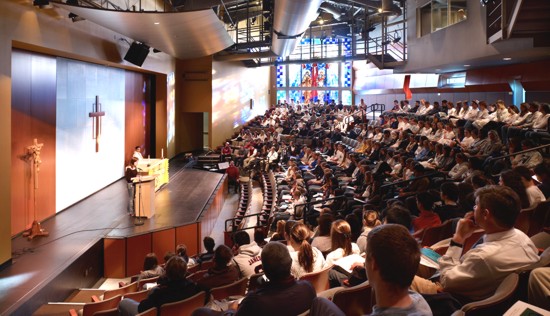
One thing is for sure. Not many schools - maybe none, ever - have accepted the creation of a scholarship to honor a convicted felon who, until the Supreme Court signs off, still stands accused of a very cruel crime.
Seattle Preparatory School is a fee-paying Jesuit Catholic school about a mile north of Seattle downtown, on the south side of Portage Bay from the main campus of the University of Washington. See Google Earth image at bottom. The school’s student role is estimated at around 650.
This announcement of a new scholarship in the name of Amanda Knox was recently published: “The fund, established by past parent [and co-founder of the advocacy group Friends of Amanda Knox] Tom Wright, will provide tuition assistance to students in need.”
Early in 2011 Tom Wright [seen reading a statement in a black shirt below] presided over a seriously loopy panel presentation at Seattle University, attended by a sparse crowd of about 35, which garbled all the hard evidence in the case and accused Italian officialdom of a number of crimes. See for example our reports here and here.

Tom Wright apparently had to kick in at least $50,000 for initial fund of the endowment, and he hopes that others will feel impelled to contribute as well.
For him this is certainly a labor of passion, since Knox with her book advance has more than enough resources of her own to set up an endowment if she wished, though to date we have seen no indication that Knox has made any charitable donations. Tom Wright seeks to make it look noble.
Sara [his daughter] and Amanda were good friends at Prep… With this fund our family wants to honor the courage of Amanda and her family. They displayed great dignity and fortitude enduring a wrongful prosecution on foreign soil. During years of unjust incarceration, the school supported Amanda through prayers and letters of support. Prep acted in the Jesuit spirit by seeking social justice and helped to win a fight worth remembering.
According to the announcement applicants should demonstrate the same “moral courage, strength of character under duress and a sincere desire to help others in need” that was supposedly exhibited by Amanda Knox.
Claims of “wrongful prosecution” and “years of unjust incarceration” are way premature, and contradicted by all these posts here.
“Moral courage” means taking a risk in order to do what one believes is right. Put aside for a moment the overwhelming evidence that Knox did murder Meredith Kercher. To what instance of moral courage could the school possibly have been referring? We don’t have a clue.
“Strength of character under duress” is pretty much expected of any upstanding member of society. But if there’s one person to which it surely doesn’t apply, it’s someone who was convicted of falsely accusing her kind boss of murder and wrecking his business. Billions of people have a “sincere desire to help others in need.” What makes Knox notable here?
Why else might Knox have been deserving of a scholarship in her name? It’s often said that she was an “honor student” but we wonder why she wasn’t wearing any honor cords at her graduation while other students had them. Author and Knox innocence proponent Nina Burleigh wrote that she “almost flunked” a religion class and was made to take summer school.
Knox has also been described as a “star soccer player.” The team she played for, however, endured “four bleak, losing seasons” according to Nina Burleigh’s book.
A few teachers and students spoke up rather listlessly and doubtfully for Knox after she was arrested and put on trial. Several are believed to have said that they were really not too surprised to hear of the mess she was in.

;Above: school president Dr Kent Hickey]
Is there ANY solid reason in the public record why Knox is deserving of this singular honor?
Tom Wright seems to have been motivated above all by his desire to memorialize “a fight worth remembering.” As much as anything else, that fight consisted of himself and a small group of like-minded diehard parents appropriating the school’s good name and resources for the purpose of a nasty, bigoted, defamatory, strong-arming campaign which played fast and loose with the facts.
Dr Kent Hickey [image directly above] became president of Seattle Prep two years after Knox graduated. He didn’t know her at all, and he may not even have met her face to face before the school accepted a scholarship in her name. Nonetheless, he described her to the media as “a good and thoughtful girl”.
He defended the school’s decision to raise funds for her by saying “We can’t pick and choose the graduates we help.” Yet Seattle Prep DOES indeed pick and choose, all the time. The school routinely punishes and expels students for everything from minor insolence to felonies. We can’t find any other instance in which it has held fundraisers for any alum—let alone a convicted felon—despite 8,000 alums living in the Seattle area.
And so Seattle Prep parents and onlookers might be forgiven for thinking that Dr Hickey is grasping at straws to justify his school’s very strange action.
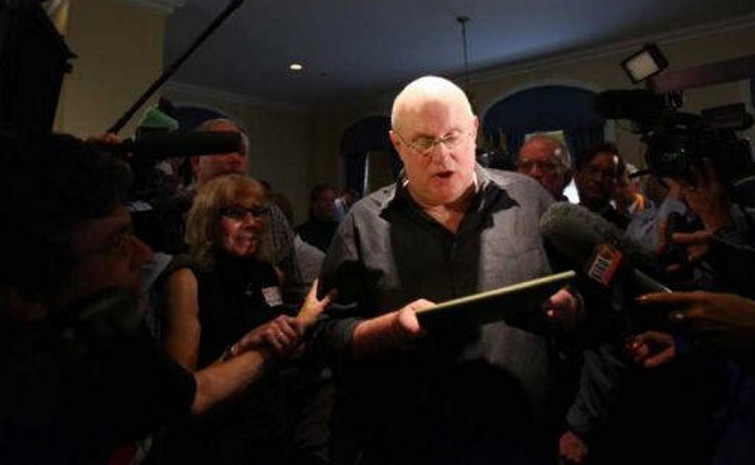
[Above: scholarship creator Tom Wright]
One angered parent commented on the PR campaign as follows in an excellent investigative report by James Ross Gardner in the local magazine Seattle Met late in 2010:
It is true some of the Seattle Prep families have allowed their students to support Amanda Knox. I do not believe that it is a 100%. A number of families have felt their students were pressured into supporting Knox without having a choice. That is not the Seattle Prep I knew from my years there as a student, nor is it what my husband experienced.
In our years as Prep students we were allowed choice rather than pressure. Because of the pressure, a number of family are not making their annual donations to Seattle Prep. I, for one, will be glad when the verdict in the appeal is handed down so perhaps we can all move past this event. Yes, event.
Seattle Prep has made it into an event and it takes away from the students discussing other news and issues. I do not wish Knox ill but my children did not go to school with her and do not know her. They have no idea if she is guilty. They are more worried about their close friend that is fighting cancer. It is time to un-focus on Knox. That’s just my opinion.

An angered alum of Seattle Prep offered this opinion to the reporter from Seattle Met:
I went to Seattle Prep, and did a full year in Italy. I learned Italian and the culture and saw a lot of Americans and Italians from the South that studied in Central and Northern university towns go a little nuts with all the freedom away from home.
Since I started following this trial, I could totally see how immoral behavior could lead to Amanda doing what she was accused of doing. Drug use, jealous roommates, and illicit sex are not a good mix, especially when people need money to support such habits. Amanda seems to have a lobby of easily-swayed-by-propaganda lab rats who bought in to the PR agency story and don’t bother following the case in its entirety.
I do not know the background of the Seattle Prep Principal, but I think he is getting in way over his head by getting into this case, and as a prior poster mentioned, he is putting a lot of pressure on people to get on the pro-Amanda bandwagon. So sick to sway young students’ minds on what to think.
This sounds like our post-modern decaying American mentality of choosing sides and voicing misdirected-emotions in forming opinions. The Principal does not sound like a well educated, worldly individual to put the Academic Institution and its students, employees and graduates in the middle of this fiasco. It reeks of “We Support Our Troops,” military campaigns to coerce and intimidate people into believing in a “popular” movement.
It’s a cruel joke that needy students who are not in a position to turn down financial aid will be forced to associate themselves with Amanda Knox and an ignominious campaign of bigotry, defamation and intimidation.
It is to them and the real victims, Meredith and her family, that Seattle hearts should go out.
Tuesday, September 25, 2012
Will Sollecito Drop Amanda Knox In It Further In A Public Seattle Interview At 7:00 PM Tonight?
Posted by Peter Quennell

This is Kane Hall on the University of Washington campus where at 7:00 tonight Sollecito is set to be interviewed.
What was described in this excellent series by an Italian lawyer on four of the Porta a Porta shows continues to be the case. One perp slyly pushing another toward the fire, in an attempt to protect his own sorry ass.
On two levels the woolly-brained component of the Seattle media and the woolly-brained Knox-Mellas camp seem to have only the dimmest comprehension of the slow-motion train-wreck Sollecito has managed to create.
(1) Sollecito may continue to claim that he “saved” Amanda by standing by her when others urged not to, but as future posts here will show, he provably didnt, and in his book in a number of places he includes very incriminatory points about her.
(2) Provable lies in Sollecito’s book have already stirred up a hornet’s nest in Italy and his own father and his lawyers have backed off - right when RS and AK face one of the toughest appeals our Italian lawyers have ever seen.
Can Sollecito be expected to make things worse both for Amanda and for himself tonight? It may not be obvious to much of the audience, but our own bet is: for sure. Must-read posts in advance here and here and here.
And a must-read book. That narcissistic killer flaunted the system - and is now doing 33 years.
Monday, August 20, 2012
Dissecting The Hellmann Report #4: The Contortions To Dismiss Witness Quintavalle
Posted by Cardiol MD

[Above: Images of Mr Quintavalle’s Conad store; he serves at far left, his cashier serves at far right]
Scroll down here for previous posts in this series.
Mr Quintavalle owns the Conad franchise at the lower end of Via Garibaldli, about halfway between Meredith’s place and Sollecito’s. Judge Massei in his trial sentencing report had stated this about Mr Quintavalle on page 83:
This Court deems that the testimony of Quintavalle is reliable. It was discovered that Inspector Volturno did not ask Quintavalle if, on the morning of November 2, he saw Amanda Knox in his shop.
He was asked ““ so Quintavalle recalled - about purchases made by Raffaele Sollecito. Mr. Quintavalle did not say anything about having seen Amanda Knox on the morning of November 2, 2007 in his shop because he was not questioned about this and because, as indicated by Quintavalle himself, he considered this fact to be insignificant.
This post exemplifies how the Hellmann-Zanetti web of deception uses a flood of reasons-to-doubt in its attempt to discredit Massei’s conclusion that Quintavalle was a reliable witness. Remarkably, the judges did not even recall Mr Mr Quintavalle, and mostly they work from the brief summary of his testimony in Massei’s report and little else.
Quintavalle’s testimony is key to the guilty verdicts against Knox and Sollecito, and contrary to Hellmann-Zanetti’s improper purpose; therefore they proceeded to systematically “disprove” Massei’s conclusion, stating this on page 39:
Indeed, Quintavalle asserts that she left without having purchased anything.
Verbatim from the hearing of March 21, 2009:
The Hellmann report here proceeds to selectively quote the hearing-transcript in a manner contrary to the usual and customary English-language meaning of “verbatim”. It may be that Hellmann-Zanetti meant to indicate that only the words they did quote were verbatim, and that their ellipses indicated innocent omissions. However the effect of their omissions is not innocent.
“¦If they had asked me”¦also because, I repeat, I, when the young lady came into my store, I did not see her leave with anything, because when she passed by and passed by again, when she left and I saw her, out of the corner of my eye I saw her leaving, I did not see that she had a shopping bag or anything in her hands.
PRESIDING JUDGE [PRESIDENTE]: You are speaking of the morning of November 2?
ANSWER: The morning of November 2. I don’t know if she bought anything, I don’t know. My cashier doesn’t remember if she bought anything, I am not able to say whether she bought something or not”¦”
If one wanted to maintain that perhaps Quintavalle is wrong, because she actually did purchase something, it would be correct to observe that if he could be wrong on this point, and also about the clothing she was wearing, then he could also be wrong about the identification of the young woman [giovane] as Amanda Knox.
Finally, the testimony of the witness Quintavalle does not seem reliable, and, in any case, represents an extremely weak piece of circumstantial evidence.”
Examples of Hellmann-/Zanetti’s flood of Reasons-to-Doubt [That AK/RS are Guilty] :
From Hellmann-Zanetti pages 39-43:
“Quintavalle
Another piece of evidence [uno degli elementi] on which the Court of first instance based its conviction of guilt is represented by the testimony of the witness Quintavalle, owner of a grocery store in Corso Garibaldi, not far from Sollecito’s house but also just a few minutes from via della Pergola: he in fact asserted that he saw, early in the morning of November 2, a young woman enter[sic] his store after having waited for it to open, whom he later recognized as Amanda Knox.
According to the prosecution (and to the Court of first instance), this circumstance proves that, contrary to the alibi she gave, she did not sleep at Sollecito’s house until late in the morning, but went very early to Quintavalle’s store, as she urgently needed to acquire a cleaning product suitable to clean the house in via della Pergola of her own traces and those of Raffaele Sollecito, before the police could intervene and take samples, since it was inevitable that sooner or later the alarm would be given because of what had happened.
In reality, even under the assumption that the circumstance is true, this would be a weak piece of circumstantial evidence, incapable in itself of proving guilt even presumptively; but in any case this Court holds that the testimony of the witness is not very reliable, in particular in what concerns the identification of the early”morning client with Amanda Knox.”
(1) Reason-to-Doubt #1: “”¦INCAPABLE IN ITSELF of PROVING guilt even presumptively”¦.”
The reader is being steered away from a level of doubt that is beyond-reasonable, and towards the territory of reasonable-doubt-that -AK/RS-are-Guilty.
“INCAPABLE IN ITSELF” improperly isolates the issue from all the other considerations which should simultaneously-be-taken-into-account.
“PROVING” improperly implies an inappropriate standard of “˜certainty’.
“¦.this Court holds that the testimony of the witness is NOT VERY RELIABLE, in particular in what concerns the identification of the early”morning client with Amanda Knox.
Logically “not very reliable” does not exclude “reliable” but Hellmann-Zanetti presumably don’t intend to concede that Quintavalle is reliable; this betrays Hellmann-Zanetti’s extreme bias and determination to exclude Quintavalle’s damning identification of [their client?] Knox.
Later on page 38:
In fact, he presented himself to the police only a year later, following intense urging by a young apprentice journalist”¦..”
This is a misleading reference to Antioca Fois; see Massei page 84:
He later spoke about having seen Amanda Knox because a young man who used to live above his shop, who he knew, Antioco Fois, had just graduated and had become a freelance reporter for the newspaper Giornale dell’Umbria. When he passed him, he would sometimes ask: “But do you know anything? Did you see something? Did you hear something?”
So one day Quintavalle told Fois that he had seen Amanda Knox on the morning of November 2; later he decided to go to the Public Prosecutor’s Office because Antioco Fois convinced him that this fact might be important.
So the “intense urging” was more like friendly exchanges with Quintavalle’s neighbour, a former lodger.
(2) Reason-to-Doubt #2: “In fact, he presented himself to the police only a year later”¦.”
Readers are invited to mistrust Quintavalle because he belatedly told this to the police for an untrustworthy reason, steering them further away from a level of doubt [with regard to Knox/Sollecito guilt] that is beyond-reasonable, and further into territory that is reasonable-doubt of their guilt.
Later still on page 38:
Now, what actually happened more than a year before Quintavalle presented himself to the police is absolutely not irrelevant, for the purpose of evaluating the reliability of the witness, especially from the point of view of the genuineness of his memories and the exactness of the identification.
(3) Reason-to-Doubt #3: “absolutely not irrelevant, for the purpose of evaluating the reliability of the witness”
This double-negative statement further invites Readers to regard Quintavalle as unreliable because his memories are false, and his identification of Knox is too inexact. Steering Readers yet further into a level of doubt of Knox’s guilt that is reasonable-doubt.
Yet further down on page 38:
“¦..this was a witness who ““ taking into account what he himself explained ““ took a year to convince himself of the precision of his perception, and the exactness of the identification of Amanda Knox with the girl that he saw, although he was able to appreciate the relevance of his testimony already in the days immediately following the murder.
(4) Reason-to-Doubt #4: “..took a year to convince himself…”
From Hellmann-Zanetti page 36:
“¦..took a year to convince himself of the precision of his perception, and the exactness of the identification of Amanda Knox with the girl that he saw, although he was able to appreciate the relevance of his testimony already in the days immediately following the murder.
Repetition of reader-invitation to regard Quintavalle as unreliable, because his perceptions are not precise enough for Hellmann-Zanetti, and his identification of Knox was too inexact even though he knew at that time that his testimony was crucially relevant.
The reader is being steered even further away from belief that Knox and Sollecito are guilty towards the territory of reasonable-doubt-that -AK/RS-are-Guilty.
Are we there yet? Is there reasonable-doubt-that-AK/RS-are-guilty NOW?!
(5) Reason-to-Doubt #5: “Quintavalle cannot maintain that…”
Near the bottom of Hellmann-Zanetti page 38:
...from the testimony of Inspector Volturno at the hearing of March 13, 2009, it turned out that Quintavalle and his employees and other shopkeepers in the area were shown photographs of Raffaele Sollecito and Amanda Knox, and were asked in particular to mention any possible purchases of cleaning products on the part of the couple, as this was a precise focal point of the investigation. Thus, Quintavalle cannot maintain that he did not mention what he saw on the morning of November 2 to Inspector [53] Volturno because he did not think it was a relevant circumstance.
Readers are yet further invited to mistrust Quintavalle, because his failure to “mention” everything he had seen, and his idea of “a relevant circumstance” were unacceptable to Hellmann-Zanetti.
That’s already five reasons to doubt on the first Quintavalle page alone.
See also Hellmann-Zanetti page 42:
....according to Quintavalle’s own statements ““ he only caught a glimpse of the girl, first out of the “corner of his eye” and then from a bit nearer for a few moments, but never from the front (verbatim from the hearing of March 21, 2009: “Yes, then she entered, I saw her let’s say like this, three quarters left, three quarters of the left side. I didn’t see her from the front”¦”
And Hellmann-Zanetti page 43:
“....when she left and I saw her, out of the corner of my eye I saw her leaving,”
Hellmann-Zanetti are now reduced to semantic quibbles about Quintavalle’s use of words to describe his visual-angle-of-view when he looked at Amanda Knox’s face.
But see Massei page 83:
This young woman remained impressed in his memory because of her very light coloured eyes, azzurri [light blue]. “¦. she could have been 1.65 to 1.67metres tall. Her face was bianchissimo [very light skin colour] and she apparently was about 20-21 years old.
And see Massei page 84:
...it is worth observing that the witness gave a precise description of what he saw on the morning of November 2 and also provided a description of certain physical features of the woman he saw (light blue eyes and pale face) which, together with the unusual time, may well have fixed in his memory what Quintavalle said he saw.
So by selective omissions of the contents of the Massei Report, based on the 4-dimensional observations of the Massei trial hearings, Hellmann-Zanetti use a 2-dimensional record of the Massei Proceedings, and semantic quibbles about Quintavalle’s angles of visual observation, to discredit Quintavalle’s testimony.
Even though Quintavalle - who the Hellmann-Zanetti jury never even saw - had testified convincingly at trial that it was Amanda whom he saw in his shop at opening-time on November 2, 2007, and he had held up well under cross-examination.
Enough already? Isn’t this a contorted flood of Reasons-to-Doubt-That-AK/RS-are-Guilty? Do you now believe that Quintaville is an unreliable witness?
If you now believe that Quintaville is unreliable, then Hellmann-Zanetti will have accomplished their mission.
[Below: Conad is at right and School for Foreigners at back. RS’s place maybe 500 meters behind, up the hill]
